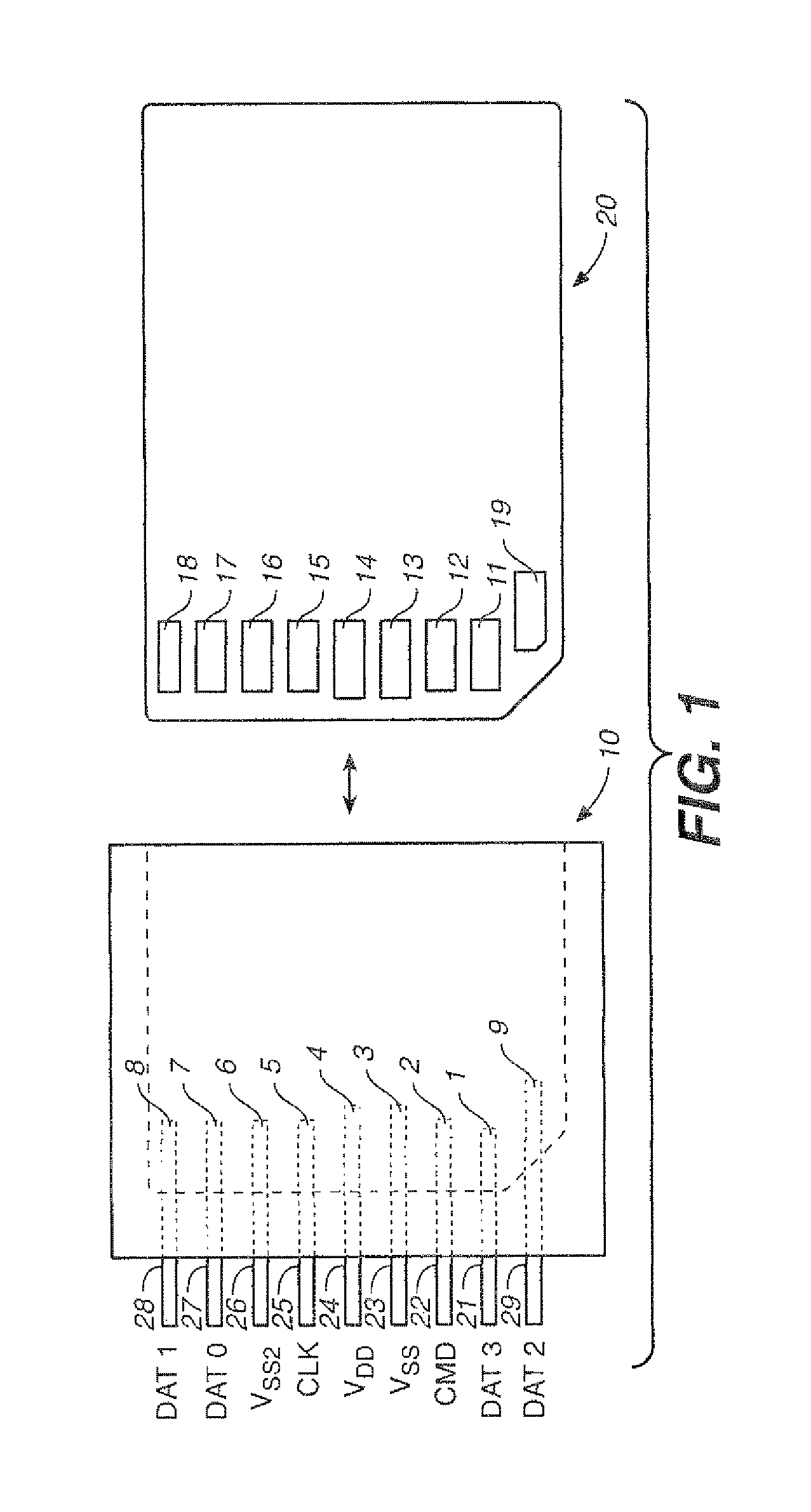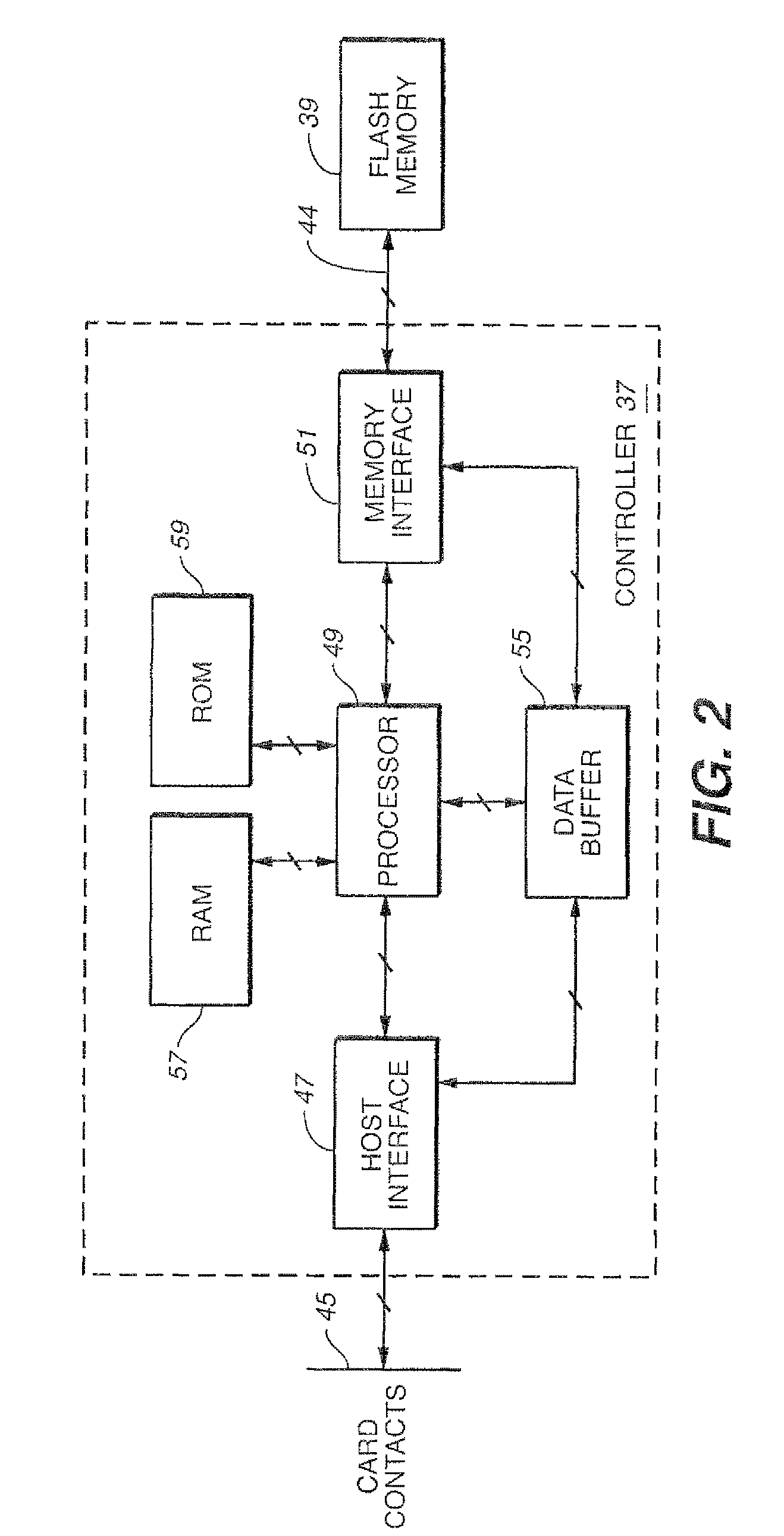Enhancement of input/output for non source-synchronous interfaces
a non-source-synchronous interface and input/output technology, applied in the field of electrical interfaces, can solve problems such as interface changes, unpractical use of approaches in many devices,
- Summary
- Abstract
- Description
- Claims
- Application Information
AI Technical Summary
Benefits of technology
Problems solved by technology
Method used
Image
Examples
Embodiment Construction
[0012]The following presents an interface, and corresponding techniques, for use of device whose core circuitry operates in one voltage domain, but exchanges signal with another device (or “host”) according a different voltage domain; and the use of such an interface for supplying data using a double data rate (DDR) transfer. A concrete example of this situation is a memory card, where the internal circuitry uses one voltage range for its core operating voltages, but exchanges signals with a host using different, input / output voltage range. According to a general set of aspects presented below, the interface receives data signals from the device at the device's core operating voltage domain, individually level shifts these to the input / output voltage domain, and then combines them into a DDR signal for transfer to the host device, where a (non-level shifted) clock signal from the host device is used as the select signal to form the DDR data signal.
[0013]As discussed in the Backgroun...
PUM
 Login to View More
Login to View More Abstract
Description
Claims
Application Information
 Login to View More
Login to View More - R&D
- Intellectual Property
- Life Sciences
- Materials
- Tech Scout
- Unparalleled Data Quality
- Higher Quality Content
- 60% Fewer Hallucinations
Browse by: Latest US Patents, China's latest patents, Technical Efficacy Thesaurus, Application Domain, Technology Topic, Popular Technical Reports.
© 2025 PatSnap. All rights reserved.Legal|Privacy policy|Modern Slavery Act Transparency Statement|Sitemap|About US| Contact US: help@patsnap.com



